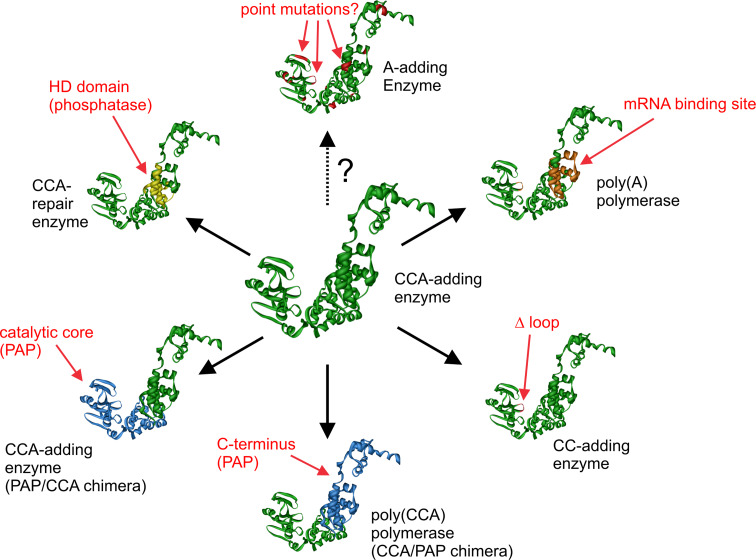Fig. 7.
Modular evolution of class II nucleotidyltransferases as supported by experimental and phylogenetic data. From a starting CCA-adding enzyme (center), new enzymes emerge by the insertion/deletion/exchange of protein modules. Individual events of this scenario are presented in a clockwise orientation: An mRNA-binding site module transforms the enzyme into a poly(A) polymerase. The deletion of the lever loop module restricts the activity to CC-addition. Exchange of large N- or C-terminal parts lead either to a poly(CCA) polymerase or to a further CCA-adding enzyme with the catalytic core of poly(A) polymerase. The insertion of the HD domain introduces a phosphatase activity. The evolution of A-adding enzymes, however, is not yet clarified (dashed arrow with question mark). The individual insertions, deletions, and replacements are indicated only at approximate positions

